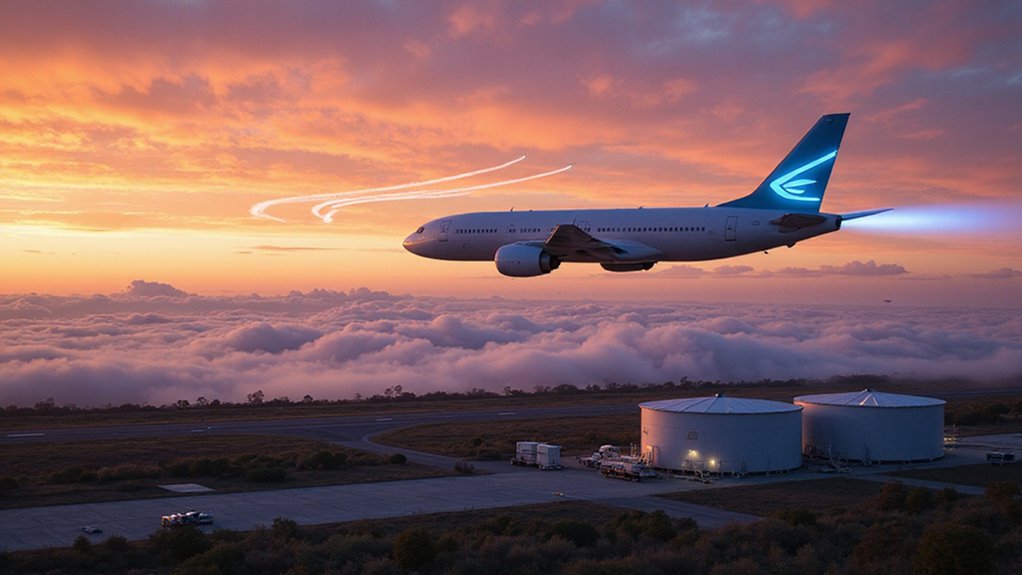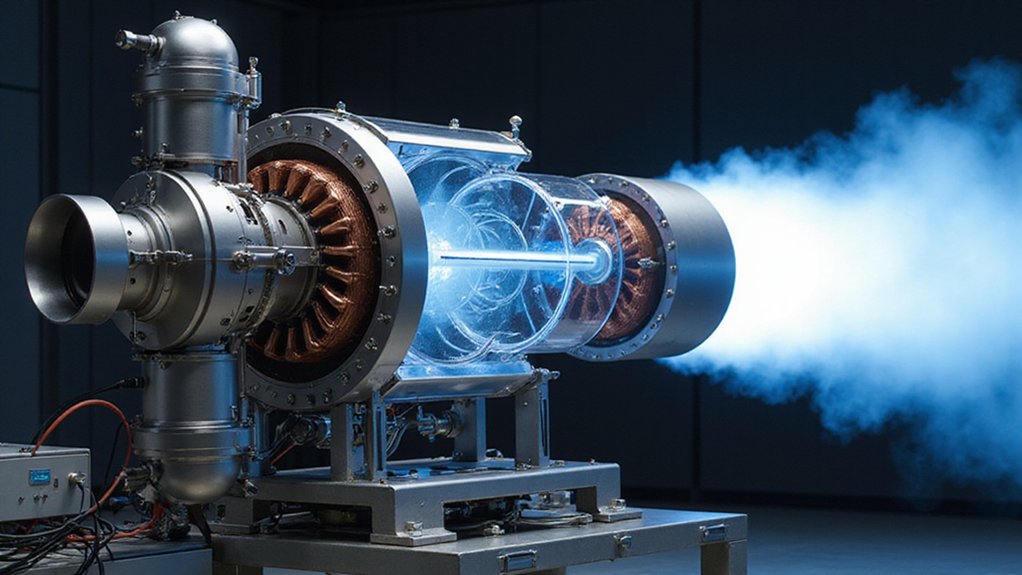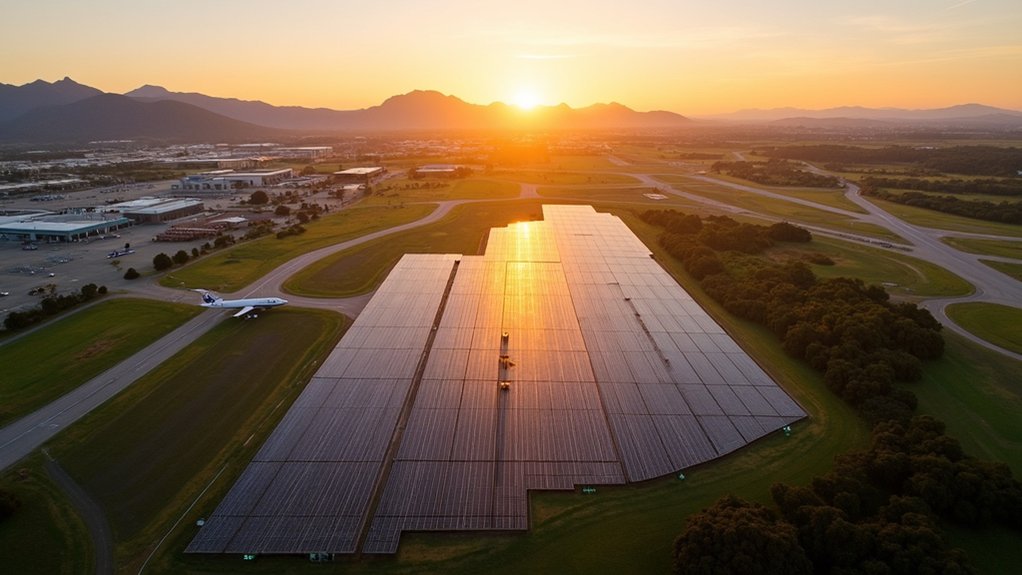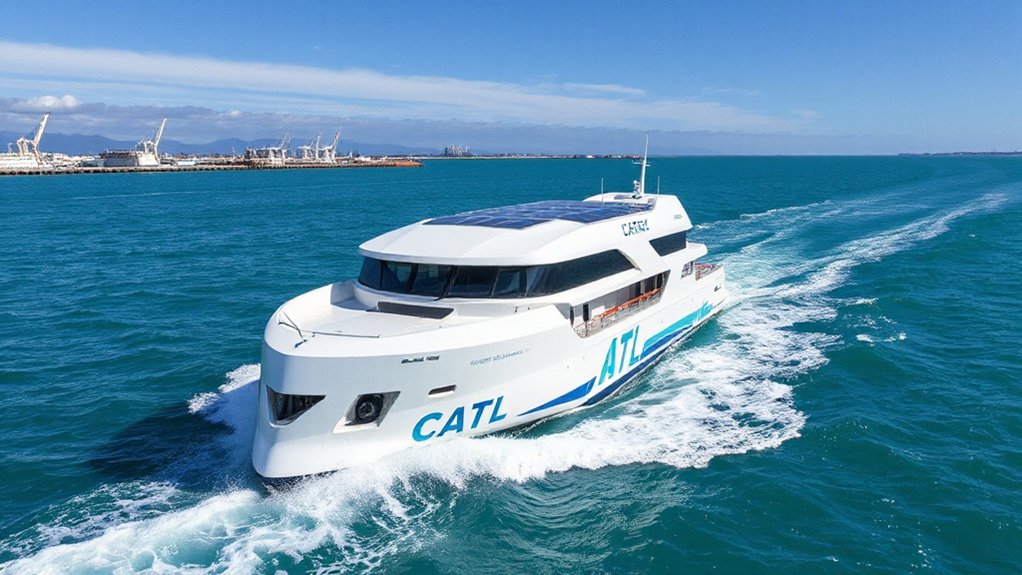Airlines aren’t entirely ditching SAF but are expanding beyond it with zero-emission aircraft technologies for 2025. As aviation emissions approach pre-pandemic levels, the industry faces pressure to innovate. Regulatory frameworks like CORSIA will become mandatory by 2027, pushing airlines toward radical solutions. Some carriers now offer passengers options to offset emissions through SAF credits. The industry’s total climate impact extends well beyond CO2 alone, demanding more thorough approaches.
As the aviation industry approaches a critical turning point in 2025, airlines worldwide are ramping up their efforts to combat climate change. With projections showing aviation carbon emissions will return to pre-pandemic levels next year, pressure is mounting for carriers to find effective solutions.
The industry faces a stark reality: without major action, aviation could consume a quarter of the entire 1.5°C carbon budget by 2050. This has led to an urgent shift in strategy beyond the initial focus on Sustainable Aviation Fuel (SAF).
Aviation’s grim trajectory demands innovation beyond SAF or risk consuming 25% of our remaining carbon budget.
While SAF has been positioned as the primary solution, airlines are now exploring more radical approaches. Zero-emission aircraft technologies are emerging as potential game-changers that could eliminate greenhouse gas emissions entirely. Post-COVID fuel consumption has increased 21% annually between 2021 and 2023, adding urgency to finding alternative solutions. These innovations represent a complete reimagining of flying beyond SAF dependency.
The Carbon Offsetting and Reduction Scheme for International Aviation (CORSIA) continues to play a key role. Started in 2021, CORSIA requires airlines to offset CO2 increases above 2019 levels and will become mandatory for all countries in 2027. It works alongside the EU and UK Emission Trading Systems as accounting mechanisms for aviation emissions.
Alaska Airlines has pioneered a new approach by offering passengers the option to purchase SAF credits while booking. Customers can now contribute 5%, 10%, or 20% of their flight emissions through these purchases.
The industry’s climate impact goes beyond CO2. Nitrous oxides, soot, and contrails produced during flight greatly contribute to warming. The European Commission acknowledges aviation’s total climate impact is greater than CO2 emissions alone.
Looking ahead, the ICAO General Assembly in September 2025 will assess progress toward the collective goal of net-zero carbon emissions by 2050. This goal requires removing at least 1.8 gigatons of carbon dioxide from aviation operations.
Two-thirds of industry respondents expect aviation decarbonization momentum to continue through 2025, signaling that this shift toward more radical climate solutions is likely to accelerate rather than slow down.
Supply chain limitations remain a significant obstacle as existing SAF production projects will meet only 2-4% of demand by 2030, highlighting why airlines are diversifying their sustainability strategies. The aviation sector is increasingly exploring green hydrogen as a promising renewable energy solution that could provide the sustainable power needed for future aircraft operations.
References
- https://reports.weforum.org/docs/WEF_Global_Aviation_Sustainability_Outlook_2025.pdf
- https://www.iea.org/energy-system/transport/aviation
- https://www.eesi.org/articles/view/u.s-and-international-commitments-to-tackle-commercial-aviation-emissions
- https://www.airlines.org/airlines-fly-green/
- https://climatecatalyst.org/learning-hub/will-european-aviation-correct-course-on-its-journey-to-net-zero-in-2025/








